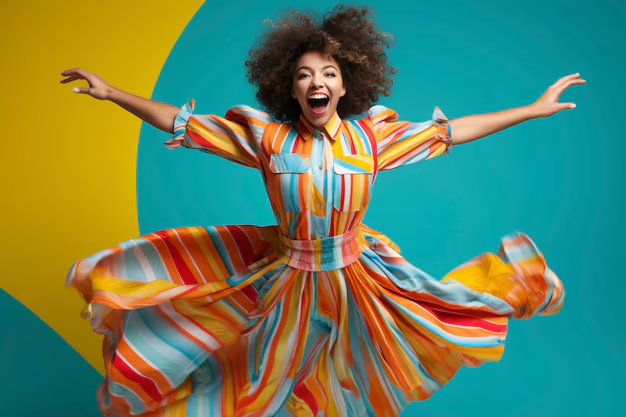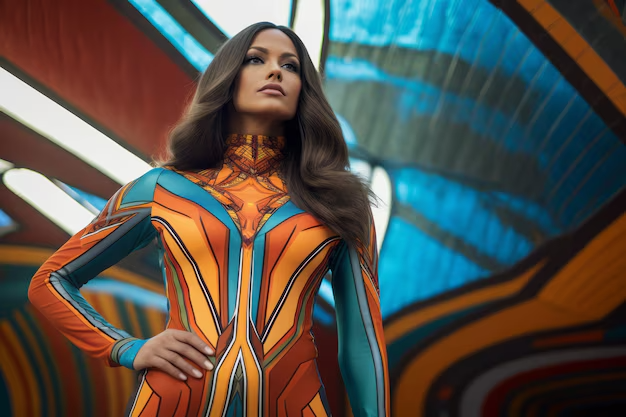African fashion dresses have long captivated the world with their vibrant colors, bold patterns, and rich cultural heritage. These dresses not only serve as clothing but also as a representation of African history, identity, and creativity. In this article, we’ll explore the various types of African fashion dresses, their cultural significance, and how modern designers are blending tradition with contemporary trends.
The Cultural Significance of African Fashion Dresses
Each African dress carries deep cultural meaning, often representing the heritage of a particular tribe or region. African fashion uses textiles such as kente, Ankara, and Dashiki, each woven with specific cultural messages. For example, the kente cloth, originating from Ghana, symbolizes royalty, wealth, and high social status. The colorful, intricately woven patterns are worn during important ceremonies, weddings, and cultural celebrations.
Ankara fabric, known for its bold, wax-printed designs, reflects African artistic expression. It has become globally popular for its affordability and versatility. While it was once reserved for special occasions, today, Ankara is embraced for both formal and casual wear, symbolizing Africa’s evolving fashion landscape.
Types of African Fashion Dresses
African fashion is incredibly diverse, with each region boasting its unique dress styles. Here are a few popular ones:
Dashiki Dresses: Originating in West Africa, Dashiki dresses feature loose-fitting designs with intricate, colorful embroidery around the neckline and sleeves. Dashikis are perfect for both formal and casual occasions, offering comfort and elegance.
Kente Dresses: Kente fabric, native to Ghana, is renowned for its rich history and vibrant colors. Kente dresses are often worn during weddings, graduations, and cultural events. Their intricate patterns and bright colors make them a symbol of prestige.
Kaftan Dresses: Worn across North and West Africa, kaftans are loose, flowing dresses often made from silk or cotton. They provide comfort in warm climates while maintaining an elegant appearance. Today, many fashion-forward designers add modern twists to traditional kaftan designs, making them a global fashion favorite.
Ankara Dresses: Ankara fabric, with its bright, wax-printed patterns, is used for creating a wide variety of African dresses, including maxi dresses, peplum styles, and fitted gowns. It’s versatile, perfect for both formal occasions and everyday wear.
Boubou Dresses: The boubou, popular in West Africa, is a flowing gown worn by both men and women. For women, it’s often tailored with intricate embroidery. Its flowing silhouette allows for comfort, while the colorful fabrics make it stand out at social gatherings.
The Evolution of African Fashion
African fashion has seen a transformation over the years, especially as modern designers blend traditional elements with contemporary designs. While African dresses have always been a celebration of cultural identity, today’s fashion houses are creating designs that appeal to global audiences without losing their African roots.
Many young African designers are now gaining international recognition, incorporating traditional African fabrics, colors, and patterns into modern silhouettes. These designers push the boundaries of fashion, making African dresses a staple on global fashion runways. From the streets of Lagos to the fashion capitals of Paris and New York, African fashion dresses are making a significant impact.

Why African Fashion Dresses Are Popular Worldwide
The growing popularity of African fashion dresses can be attributed to their versatility and cultural richness. Here are a few reasons why they have gained international attention:
Bold and Unique Designs: African fashion dresses stand out with their vibrant colors, intricate patterns, and unique designs. Every dress tells a story, making each piece not just an item of clothing but a work of art.
Comfort and Practicality: Many African dress styles, like the kaftan and Dashiki, are designed for comfort. The flowing fabrics and loose-fitting designs make them perfect for both warm climates and comfortable everyday wear.
Sustainability: As the world becomes more eco-conscious, many African designers are focusing on sustainable fashion. Using locally sourced fabrics and supporting traditional artisans ensures that African fashion remains environmentally friendly while supporting local economies.
Cultural Appreciation: People around the world are becoming more interested in learning about other cultures. Wearing African fashion dresses is a way to appreciate and celebrate Africa’s rich heritage. Whether for special occasions or daily wear, African fashion offers a blend of culture and style.
Modern Designers Shaping African Fashion
Several contemporary African designers are making waves in the global fashion industry. Designers like Olivier Rousteing, Lisa Folawiyo, and Kenneth Ize are fusing traditional African fabrics and techniques with modern fashion trends. They not only showcase African heritage but also highlight the versatility and global appeal of African fashion.
Many of these designers work to promote fair trade, sustainability, and support for local artisans, making African fashion a key player in the ethical fashion movement.
Conclusion
African fashion dresses are more than just garments; they represent a beautiful fusion of history, culture, and creativity. From kente to Ankara, the intricate designs, vibrant colors, and cultural significance of African dresses make them a timeless fashion choice. As African fashion continues to evolve, its global influence grows, ensuring that the beauty and artistry of African dresses remain celebrated for generations to come. Whether worn at cultural events, formal occasions, or as a bold statement of everyday style, African fashion dresses remain an integral part of global fashion.
